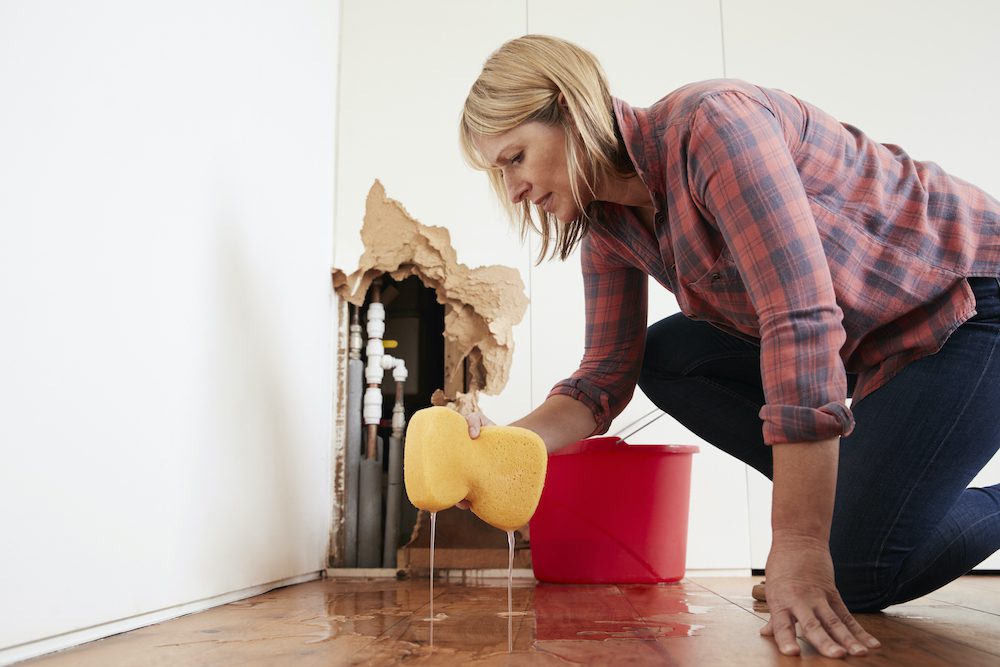Exactly how to Check If Your Home Has a Hidden Leakage
Exactly how to Check If Your Home Has a Hidden Leakage
Blog Article
Each person is bound to have his or her own conception on the subject of Locating water leaks.

Early discovery of leaking water lines can reduce a prospective calamity. Some tiny water leaks might not be noticeable.
1. Analyze the Water Meter
Every residence has a water meter. Checking it is a proven manner in which helps you uncover leaks. For starters, switch off all the water sources. Make sure no one will flush, use the faucet, shower, run the cleaning equipment or dishwasher. From there, go to the meter as well as watch if it will certainly alter. Given that no person is using it, there ought to be no activities. That suggests a fast-moving leakage if it relocates. Similarly, if you spot no changes, wait a hr or 2 and check back once again. This means you may have a slow-moving leak that might also be underground.
2. Examine Water Usage
Evaluate your water costs as well as track your water intake. As the one paying it, you ought to observe if there are any type of discrepancies. If you detect sudden changes, in spite of your usage being the same, it indicates that you have leaks in your plumbing system. Bear in mind, your water expense should fall under the very same range every month. A sudden spike in your costs indicates a fast-moving leakage.
At the same time, a consistent increase every month, despite having the same behaviors, shows you have a slow-moving leak that's additionally slowly rising. Call a plumber to completely examine your building, particularly if you really feel a warm location on your floor with piping beneath.
3. Do a Food Coloring Examination
When it pertains to water usage, 30% comes from commodes. Test to see if they are running appropriately. Decline specks of food color in the storage tank and also wait 10 minutes. If the color in some way infiltrates your bowl throughout that time without flushing, there's a leak between the container and dish.
4. Asses Exterior Lines
Do not neglect to check your outdoor water lines too. Test spigots by connecting a yard pipe. Needs to water leak out of the link, you have a loosened rubber gasket. Replace this and make sure all links are limited. It will certainly aid obtain it properly checked out and also kept yearly if you've got a lawn sprinkler system. One little leakage can lose tons of water and spike your water costs.
5. Assess the scenario and inspect
Property owners ought to make it a routine to check under the sink counters and also inside closets for any bad odor or mold and mildew development. These two warnings show a leak so timely interest is required. Doing regular inspections, even bi-annually, can save you from a major issue.
Examine for stainings as well as deteriorating as many devices and pipes have a life expectations. If you presume dripping water lines in your plumbing system, do not wait for it to rise.
Early detection of dripping water lines can reduce a possible calamity. Some small water leakages may not be noticeable. Inspecting it is a surefire means that helps you find leakages. One tiny leakage can lose tons of water as well as surge your water expense.
If you suspect dripping water lines in your plumbing system, don't wait for it to escalate.
How to Know If Your Home Has a Hidden Leak
Water Meter Reveals Inexplicable Water Usage
If you’d like to test whether or not there’s a leak somewhere in your home, you can do this using your water meter. Here is how to conduct the test:
Don’t use any water in your home for at least 30 minutes; this also means not turning on faucets or water-using appliances.
Go outside, and check your water meter for activity.
If your water meter shows that there was activity, even though no one was using any water, this proves that there is a leak in your home.Visible Mold or Mildew Growth
Leaks behind walls create moist, dark environments that allow mold and mildew to grow and thrive. Eventually, you might see mold growth forming on the wall closest to a hidden leak.
If mold is growing in an area that receives a high amount of moisture, such as a bathroom, it may simply be an indication that better ventilation is needed. However, if you see mold growth on a wall or the ceiling in an area where you would not expect, you probably have a hidden leak.
Musty, Mildew Odor
Sometimes you might not be able to see the mold or mildew that is growing as a result of a leak. However, the smell can give the problem away just as easily. If you catch a whiff of something musty, there’s a good chance that old water is collecting somewhere in your home that you can’t see.
Stained/Warped Walls, Ceilings, or Floors
When your home soaks up water, a variety of red flags can become visible, including ceiling stains, bubbling drywall, warped walls, and sagging floors. While these issues can be caused by excess humidity, they can also be signs that a pipe or plumbing connection has started leaking behind your walls.
Inexplicably High Water Bill
After a while, you get a general sense for what your water bill should be. If you own a pool or sprinkler system, your bill will tend to be higher during summer. However, if you receive a water bill that seems especially high, and you can’t figure out what caused it, then you may have a hidden leak somewhere that’s increasing your bill.
https://www.plumbingjoint.com/blog/2019/july/how-to-know-if-your-home-has-a-hidden-leak/

I'm certainly very involved in Leaking water lines and I'm hoping you liked my post. Are you aware of somebody who is interested by the niche? Be sure share it. Thanks for your time invested reading it.
Report this page